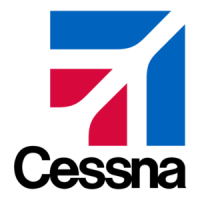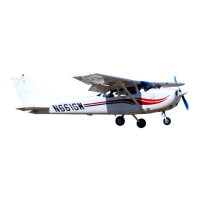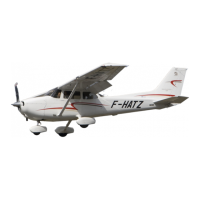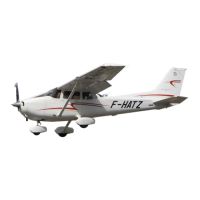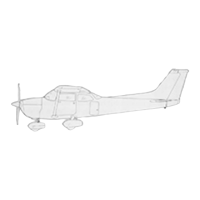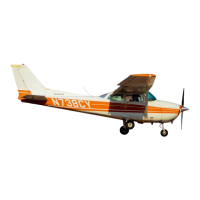SECTION 4
NORMAL
PROCEDLIRES
CESSNA
MODEL 182T NAV I I I
BEFORE TAKEOFF
(Continued)
ELEVATOR TRIM
I
The elevator trim tab is in the takeoff position when the trim pointer
is aligned with the index mark on the pedestal cover. Adjust the
trim wheel during flight as necessary to make control wheel forces
more neutral.
LANDING LIGHTS
I
It is recommended that only the taxi light be used to enhance the
visibility of the airplane in the traffic pattern or
enroute. This will
extend the service life of the landing light.
TAKEOFF
POWER CHECK
It is important to check full throttle engine operation early in the
takeoff roll. Any sign of rough engine operation or sluggish engine
acceleration is good cause for discontinuing the takeoff. If this
occurs, you are justified in making a thorough full throttle static
run-up before another takeoff is attempted. The engine should run
smoothly and turn approximately 2350
-
2400 RPM.
Full throttle run-ups over loose gravel are especially harmful to
propeller tips. When takeoffs must be made over a gravel surface,
I
advance the throttle slowly. This allows the airplane to start rolling
before high RPM is developed, and the gravel will be blown behind
the propeller rather than pulled into it.
I
Prior to takeoff from fields above 5000 feet pressure elevation, the
mixture should be leaned to give maximum RPM at full throttle,
with the airplane not
moving.~~This mixture setting should provide a
fuel flow that closely matches that shown on the Maximum Power
Fuel Flow placard.
After full throttle is applied, adjust the throttle friction lock clockwise
I
to prevent the throttle from moving back from a maximum power
position. Similar friction lock adjustments should be made as
I
required in other flight conditions to hold the throttle setting.
(Continued Next Page)

